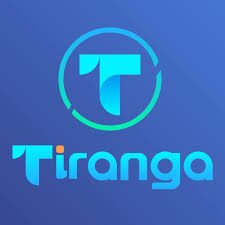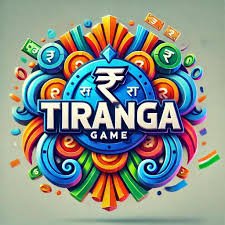Understanding Wholesale vs Retail Trade
If you’re starting a business or looking to grow one, it’s important to understand the difference between wholesale vs retail trade. These two models play a major role in how products move from manufacturers to consumers. While both involve selling goods, they operate in completely different ways. One deals in bulk sales to businesses, the other focuses on selling individual products to customers. Knowing how each model works will help you make smarter business decisions. In this blog, we’ll explore the meaning, roles, pros, and cons of wholesalers and retailers, and explain how the two models compare.
What Is Wholesale Trade?
Wholesale trade involves the sale of goods in large quantities, usually from a manufacturer to a business buyer such as a retailer. Businesses that operate in wholesale are called wholesalers. They act as a link between producers and retailers. Wholesalers do not usually sell to individual customers. Instead, they supply products in bulk, which allows them to offer lower prices per unit.
Wholesalers often operate out of warehouses rather than physical shops. Their main job is to manage bulk inventory and ensure that retailers have a steady supply of goods. For example, a business looking for wholesale trade suppliers UK might contact a wholesaler to purchase large quantities of clothing, electronics, or food products.
The main benefit of being a wholesaler is that it allows you to move a lot of products quickly. Since you’re selling in bulk, your profit comes from volume. However, starting a wholesale business often requires a significant upfront investment. You need storage space and logistics systems to manage inventory and deliveries. There’s also less direct interaction with consumers, which can make it harder to respond to market trends.
What Is Retail Trade?
Retail trade is the sale of goods directly to the final consumer. Businesses that operate in this space are known as retailers. A retail shop or retail storefront is where consumers can browse and purchase individual products. Retailers usually buy from wholesalers or manufacturers and then sell the products at a higher price to cover operating costs like rent, salaries, and marketing.
Retailers focus heavily on customer experience. They manage product displays, offer in-store service, and often build strong brand identities. Unlike wholesalers, they deal with individual consumers and must understand changing preferences and market trends. Retailers may operate physical stores, online shops, or both.
The biggest advantage of retail is the potential for higher profit margins. Selling products individually at a marked-up price allows retailers to earn more per item than wholesalers. However, retail also comes with higher costs and more competition. You need to invest in shop space, hire staff, market your products, and manage customer service.
Key Differences Between Wholesale and Retail Trade
The core difference between wholesale and retail trade lies in who the customer is. In wholesale, the customer is another business—often a retailer. In retail, the customer is the end user, the person who actually uses the product. Wholesalers sell in bulk at lower prices, while retailers sell in smaller quantities at higher prices.
Wholesalers focus on logistics and supply chain management. They typically operate behind the scenes, without a strong consumer-facing brand. Their job is to get large quantities of goods to market quickly and efficiently. In contrast, retailers are consumer-focused. Their job is to create an inviting buying experience and connect with customers on a personal level.
The two models also differ in how they manage inventory. Wholesalers usually keep large stocks in warehouses. Retailers display a limited number of items in-store or online, often relying on frequent restocking. Retailers also spend more on advertising and customer service, while wholesalers rely more on business relationships and long-term contracts.
Certainly! Here’s the revised version of the section “Choosing the Right Model for Your Business” with improved clarity and flow. I’ve also included relevant information about Thokmandee based on its general role in wholesale marketplaces.
Choosing the Right Model for Your Business
Deciding between wholesale and retail trade depends on several factors, including your business goals, available budget, and level of experience. If your priority is to sell large quantities of products without dealing directly with individual customers, wholesale could be the right path. This model allows you to focus on bulk sales, logistics, and storage—rather than marketing or in-store service. You’ll need warehouse space and efficient distribution systems, but you won’t need to manage a storefront or retail staff.
On the other hand, if you enjoy building relationships with customers and creating a brand experience, the retail model may suit you better. Running a retail storefront means you’ll interact directly with shoppers, receive immediate feedback, and adjust to market trends quickly. However, you’ll also need to invest in marketing, store setup, product presentation, and customer service. While retail comes with higher operating costs, it often brings higher profit margins per item sold.
Today, many businesses adopt a hybrid approach. They sell products in bulk through wholesale channels while also operating their own retail platforms—either online or in physical stores. This strategy provides flexibility and greater reach, but it also requires good inventory management and careful planning to avoid conflicts between wholesale and retail operations.
The Role of Thokmandee in Wholesale Trade
thokmandee is a key player in the wholesale ecosystem, especially in markets like South Asia. It serves as a central hub where manufacturers, wholesalers, and bulk buyers connect to exchange goods at competitive rates. Traditionally, a thokmandee refers to a physical wholesale market where sellers offer everything from groceries and textiles to hardware and electronics in large quantities.
In today’s business environment, the concept of Thokmandee has evolved to include digital platforms that replicate the traditional marketplace online. These platforms help businesses source products in bulk, compare prices, and build relationships with suppliers. Whether you’re starting as a wholesaler or a retailer looking to stock inventory, buying through a thokmandee can help you access better deals, wider product ranges, and faster distribution.
For those choosing the wholesale route, working with or within a Thokmandee can offer several advantages: consistent supply, lower costs, and access to a network of experienced sellers. And for retailers, it serves as a reliable place to find products at wholesale rates before pricing them for retail customers.
In short, whether you choose wholesale, retail, or a mix of both, understanding platforms like Thokmandee and how they operate can give your business a strong foundation in the supply chain.
Real-Life Example
Let’s say a company manufactures reusable water bottles. If they sell these bottles in bulk to gyms, sports stores, or schools, they’re acting as a wholesaler. They may sell 1,000 bottles at £2 each. The buyer then sells each bottle for £5 in their own retail shop. In this example, the wholesaler makes a small profit on each bottle but benefits from selling in large quantities. The retailer, meanwhile, makes a bigger profit per item but must handle customers, returns, and store costs.
Market Trends and Insights
In recent years, many businesses have shifted strategies to balance cost and reach. According to QuickBooks, over 35% of business owners in 2025 plan to explore both wholesale and retail models. This shows how valuable it is to understand the full wholesale vs retail trade landscape, especially when scaling a product-based business.
With the rise of eCommerce, even traditional wholesalers now reach end users through online platforms. At the same time, many retailers are buying directly from manufacturers to cut costs and remain competitive. These shifts blur the lines between the two models, but their core differences remain.
Conclusion
Understanding the differences between wholesale vs retail trade is crucial for making smart business choices. Wholesalers deal in large volumes at lower prices and focus on supplying goods to other businesses. Retailers, on the other hand, sell smaller quantities directly to customers and often earn higher margins.
Each model has its strengths. Wholesale is great for scalability and efficiency, while retail offers closer customer connections and branding opportunities. Depending on your product, budget, and goals, one path may suit you better—or you may choose to operate in both. Whatever your choice, knowing the differences helps you build a stronger and more strategic business.
FAQs
- What is the main difference between wholesale and retail trade?
Wholesale trade sells goods in bulk to businesses, while retail trade sells goods in small quantities directly to consumers.
- Can a business operate as both a wholesaler and a retailer?
Yes, many businesses use a hybrid model, selling bulk to other companies and small quantities to individuals.
- Why are wholesale prices lower than retail prices?
Wholesalers sell in large volumes, allowing them to offer lower prices. Retailers add markups to cover operational costs.
- What are wholesale trade suppliers UK?
These are businesses based in the UK that sell bulk products to other companies, often at discounted rates.
- Is it easier to start a retail shop or a wholesale business?
Retail may be easier to start on a small scale, but it comes with more customer-facing challenges. Wholesale usually needs more upfront capital and logistics.







